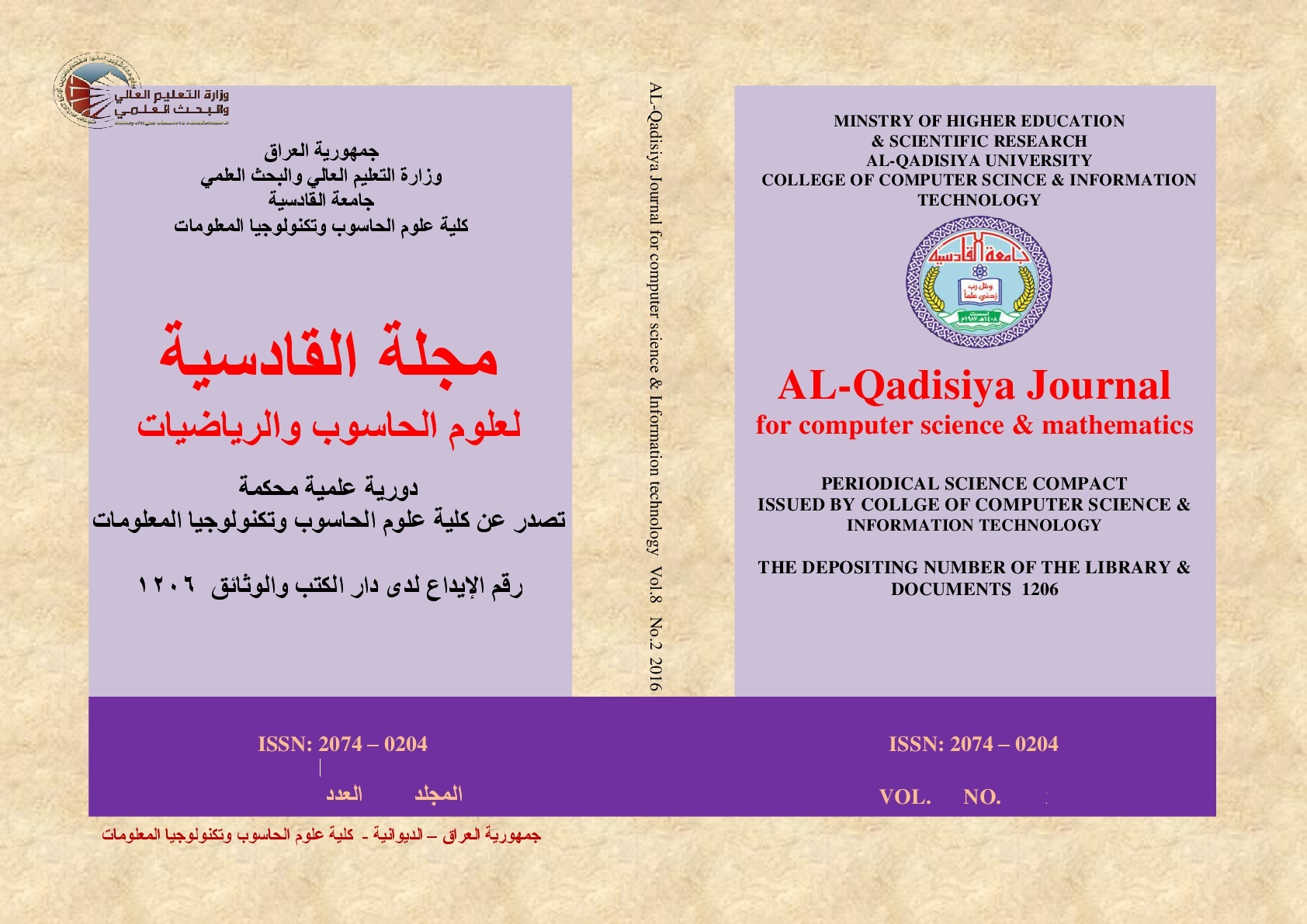Enhancing Attack Detection in Android Environment Through Software Based on Machine Learning Methods
DOI:
https://doi.org/10.29304/jqcsm.2025.17.11969Keywords:
Android Security, ,Mobile Malware, Machine Learning, Attack Detection SystemsAbstract
With the growing use of mobile devices, it is projected that nearly 70% of mobile phone users own an Android smartphone. Due to the completely open-source nature of Android, the Android operating system is vulnerable to various attacks. The smartphone’s data has a sensitive nature, making it important to protect from these attacks. Machine learning (ML) approaches have proven to be an efficient methods of detecting these assaults since they can create a classifier from a set of training instances; therefore, it does not need an existing database of harmful signatures. This review paper aims to cover different characteristics involved in Android attack detection systems, such as the Android operating system environment, feature extraction, feature selection, performance measures, supervised, and unsupervised models. They are described based on previous works that employ machine learning for detecting Android malware. Furthermore, this paper intends to help researchers gain expertise in the subject of Android attack detection.
Downloads
References
Smartphone Market Share. Accessed: Apr. 30, 2020. [Online]. Available: https://www.idc.com/promo/smartphone-market-share/os.
R. Srinivasan, Karpagam.S, M. Kavitha, R. Kavitha, An Analysis of Machine Learning-Based Android Malware Detection Approaches. International Conference on Electronic Circuits and Signalling Technologies, 2022.
[Online]. Available: https://www.appbrain.com/stats/number-of-androidapps.
J. Li, L. Sun, Q. Yan, Z. Li, W. Srisa-an, and H. Ye, ``Signifcant permission identifcation for Machine-Learning-Based Android malware detection,'' IEEE Trans. Ind. Informat., vol. 14, no. 7, pp. 32163225, Jul. 2018.
J. Todd McDonald, Nathan Herron, William Bradley Glisson, Ryan K. Benton, Machine Learning-Based Android Malware Detection Using Manifest Permissions. 54th Hawaii International Conference on System Sciences | 2021.
Sufatrio, D. J. J. Tan, T.W. Chua, and V. L. L. Thing, ``Securing Android: A survey, taxonomy, and challenges,'' ACM Comput. Surv., vol. 47, no. 4, p. 58, May 2015.
Qing Wu , Xueling Zhu , and Bo Liu,” A Survey of Android Malware Static Detection Technology Based on Machine Learning”, Mobile Information Systems Volume 2021, Article ID 8896013, 18 pages.
A. Feizollah, N. B. Anuar, R. Salleh, and A. W. A. Wahab, “A review on feature selection in mobile malware detection,” Digital Investigation, vol. 13, pp. 22–37, 2015.
Nuren Natasha Maulat Nasri, Mohd Faizal Ab Razak, RD Rohmat Saedudin, Salwana Mohamad Asmara and Ahmad Firdaus, Android Malware Detection System using Machine Learning. International Journal of Advanced Trends in Computer Science and Engineering, vol.9, no.1, 2020, 327 – 333.
Eslam Amer, Seif ElDein Mohamed, Mostafa Ashaf, Amr Ehab, Omar Shereef, Haytham Metwaie, Ammar Mohammed, Using Machine Learning to Identify Android Malware Relying on API calling sequences and Permissions. Journal of Computing and Communication Vol.1, No.1, PP. 38-47, 2022.
Abdelrahman Elsharif Karrar, Adopting Graph-Based Machine Learning Algorithms to Classify Android Malware. IJCSNS International Journal of Computer Science and Network Security, VOL.22 No.9, September 2022.
Amarjyoti Pathak, Utpal Barman, Th. Shanta Kumar, Machine learning approach to detect android malware using feature-selection based on feature importance score. Journal of Engineering Research, 2024.
D. Youchao, “Android Malware Prediction by Permission Analysis and Data Mining,” Univ. Michigan-Dearborn, 2017.
Brownlee, J. (2016). Supervised and Unsupervised Machine Learning Algorithms. Retrieved May 13, 2018, from http://machinelearningmastery.com/supervised-andunsupervised- machine-learning-algorithms/ https://doi.org/10.1007/978-3-030-22475-2_1.
Garg, B. (2013). Design and Development of Naive Bayes Classifier (Master Thesis). North Dakota State University of Agriculture and Applied Science.
Namratha, M., & Prajwala, T. R. (2012). A Comprehensive Overview of Clustering Algorithms in Pattern Recognition. Journal of Computer Engineering, 4(6), 23–30.
Scott, G. (2015). ML 101: Reinforcement Learning. Retrieved November 23, 2017, from http://scottge.net/2015/07/02/ml101-reinforcement-learning/.
Guyon, I., & Elisseeff, A. (2006). Feature Extraction, Foundations and Applications: An introduction to feature extraction. Studies in Fuzziness and Soft Computing, 207, 1–25. https://doi.org/10.1007/978-3-540-35488-8_1
Khan, J.; Shahzad, S. Android Architecture and Related Security Risks. Asian J. Technol. Manag. Res. [ISSN: 2249–0892] 2015, 5, 14–18. Available online: http://www.ajtmr.com/papers/Vol5Issue2/Vol5Iss2_P4.pdf (accessed on 19 May 2021).
Platform Architecture. Available online: https://developer.android.com/guide/platform (accessed on 19 May 2021).
Android Runtime (ART) and Dalvik. Available online: https://source.android.com/devices/tech/dalvik (accessed on 19 May 2021).
Faruki, P., Bharmal, A., Laxmi, V., Ganmoor, V., Gaur, M.S., Conti, M., Rajarajan, M., 2015. Android security: a survey of issues, malware penetration, and defenses. IEEE Commun. Surv. Tutor. 17 (2), 998–1022. doi: 10.1109/COMST.2014.2386139.
Sikder, R., Khan, M.S., Hossain, M.S., Khan, W.Z., 2020. A survey on android security: development and deployment hindrance and best practices. TELKOMNIKA (Telecommun. Comput. Electron. Control) 18 (1), 485. doi: 10.12928/telkomnika. v18i1.13288.
Li Meijin, Fang Zhiyang, Wang Junfeng, Cheng Luyu, Zeng Qi, Yang Tao, Wu Yinwei and Geng Jiaxuan, A Systematic Overview of Android Malware Detection, APPLIED ARTIFICIAL INTELLIGENCE 2022, VOL. 36, NO. 1, e2007327 (524 pages).
Ayman Elshenawy, Ahmed Hashem El Fiky, and Mohamed Ashraf Madkour, Detection of Android Malware using Machine Learning. IEEE, (2021).
Ahmed S. Shatnawia, Qussai Yassen, Abdulrahman Yateem, An Android Malware Detection Approach Based on Static Feature Analysis Using Machine Learning Algorithms. Procedia Computer Science, 201 (2022) 653 – 658.
Beenish Urooj, Munam Ali Shah, Carsten Maple, Muhammad Kamran Abbasi and Sidra Riasat, Malware Detection: A Framework for Reverse Engineered Android Applications Through Machine Learning Algorithms. Digital Object Identifier 10.1109/IEEE ACCESS.2022.3149053.
Vasileios Syrris, Dimitris Geneiatakis, on machine learning effectiveness for malware detection in Android OS using static analysis data. Journal of Information Security and Applications 59 (2021) 102794.
Faris Mutar Mahdi Aledam, Bilal Majeed Abdulridha Al-Latteef, Enhanced Malware Detection for Mobile Operating Systems Using Machine Learning and Dynamic Analysis. International Journal of Safety and Security Engineering, 14 No. 2 (2024) 513-521.
R. Srinivasan, Karpagam.S, M. Kavitha, R. Kavitha, An Analysis of Machine Learning-Based Android Malware Detection Approaches. International Conference on Electronic Circuits and Signalling Technologies, 2022.
Ahmed S. Shatnawi, Aya Jaradat, Tuqa Bani Yaseen, Eyad Taqieddin, Mahmoud Al-Ayyoub, and Dheya Mustafa, An Android Malware Detection Leveraging Machine Learning. Hindawi, Wireless Communications and Mobile Computing Volume 2022, Article ID 1830201, 12 pages.
Sakib Shahriar Shafin, Md. Maroof Ahmed, Mahmud Alam Pranto, Detection of Android Malware using Tree-based Ensemble Stacking Model. IEEE, (2023).
V. Joseph Raymond and R. Jeberson Retna Raj, Investigation of Android Malware with Machine Learning Classifiers using Enhanced PCA Algorithm. Computer Systems Science & Engineering, CSSE, 2023, vol.44, no.3.
K S Ranadheer Kumar and Jagadish Gurrala, Enhancing Android Malware Detection through Filter-Based Feature Selection and Machine Learning Classification. Journal of Electrical Systems 20-3 (2024): 2801-2809.
Louridas, P., & Ebert, C. (2016). Machine Learning. IEEE Software, 33(5), 110-115. doi: 10.1109/MS.2016.114
J. Todd McDonald, Nathan Herron, William Bradley Glisson, Ryan K. Benton, Machine Learning-Based Android Malware Detection Using Manifest Permissions. 54th Hawaii International Conference on System Sciences | 2021.
Shakirat Aderonke Salihu, Sodiq Olamilekan Quadri, Oluwakemi Christiana Abikoye, Performance Evaluation of Selected Machine Learning Techniques for Malware Detection in Android Devices. Iloein journal of computer science and information technology (ILJCSIT) ISSN:2550 – 7214 (print) Vol. 3, No. 1 (2020)
Mohamed Salem Alhebsi, Android Malware Detection using Machine Learning Techniques, Rochester Institute of Technology RIT Digital Institutional Repository (2022)
C. Urcuqui-L´opez, Navarro Cadavid, Framework for malware analysis in Android, Sist. Y. Telem. ´atica 14 (37) (2016) 45–56, https://doi.org/10.18046/syt. v14i37.2241. https://www.icesi.edu.co/revistas/index.php/sistemas_telematica/ article/view/2241.
Downloads
Published
How to Cite
Issue
Section
License
Copyright (c) 2025 Shatha hamead Othman , Huda Abdulaali abdulbaqi

This work is licensed under a Creative Commons Attribution-NonCommercial-NoDerivatives 4.0 International License.













